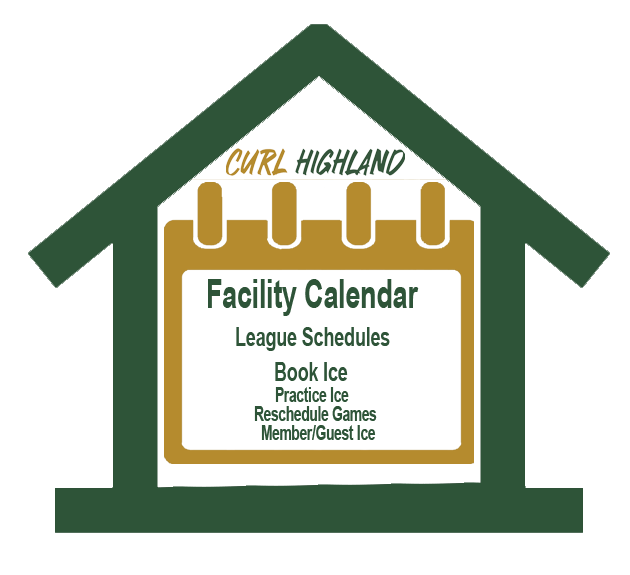At HCCC we take the safety of our players and staff seriously and ask that all members review the safety information below which is also on the Health & Safety bulletin board in the curling hallway. The First Aid Kit and AED are located in the curling hallway just inside the double doors.
Actions for a Personal Injury
The Actions for a Personal Injury process should be completed whenever a personal injury occurs that requires the use of the first aid kit, a participant is removed from play, or 911 is called. The person who is assisting the injured party should complete an Injury/Incident Report Form. Please fill in the form as completely as possible, place it in an envelope, seal it and put it in the Injury Report Folder. The folder will be checked regularly by assigned individuals. All reports will be scanned and kept in our records.
Actions for a Facility Emergency
The Emergency Action Plan describes the actions that should be taken in the event of a facility emergency (alarms, fire, exits).
Safety On The Ice
- Sliders are slippery. Ice is slippery.
- Step on the ice with your gripper foot.
- Never step onto the ice with your slider foot.
- Step off the ice with your slider foot.
- Never step off the ice with your gripper foot.
- Your slider foot should be: LAST ON, FIRST OFF.
Managing The Risk While Curling (from www.smartrisk.ca )
Curling has become a popular winter sport among Canadians of all ages. But like all sports played on ice, the risk of falls is increased. SMARTRISK offers some tips on preventing fall-related and other injuries while on the sheet.
Look First
- Curling sheets are always busy with activity: rocks being delivered, sweepers following rocks, people walking back and forth. Before you step onto the ice take a look around and take note of the sheets being used and the experience and potential injury risks presented by the other players.
- Falls often happen when a curler is stepping on or off the ice. Always step on the ice with your gripper foot first; never step on with your slider foot first. When you step off the ice, always step off with your slider foot first. Hold onto the boards or use your broom or brush for better balance.
- Ice conditions can change from one day to the next. Note how slippery the ice is when you first step on, and use extra caution if necessary.
- Keep an eye out for stray rocks, and prevent rocks from going onto another sheet.
- Keep your feet on the ice. Walk or slide; never hop or run.
Wear the Gear
- Clothing should be warm, comfortable and allow movement. Thin gloves may help to prevent blisters while sweeping.
- Make sure that your shoes provide good traction on ice. Be sure that your slider and gripper or shoes are clean and dry before stepping on the ice.
- You can use your broom or brush to help keep your balance and avoid falls, both when you’re getting on and off the ice and while playing.
- Use your broom or brush to stop the rocks. A rock can have more momentum than you may realize, and if you use your hand to stop it, your fingers can be pinched between it and another rock. If you use your foot to stop a fast moving rock, you can lose your balance and fall.
Get Trained
- Curling courses and clinics will help you how to enjoy the game to the fullest and teach you the skills needed to avoid slips and falls.
- If you’re new at curling, take some time to get used to standing and moving on the ice. Don’t get overconfident, and remember that some patches of ice may be more hazardous than others.
- If you’re sweeping and are having trouble keeping up with a fast shot, stop and let it go. With practice, you’ll learn to keep up with faster shots without risking a fall.
Play Sober
- Keep focused on the game. Things can happen very quickly in curling, and your fellow curlers will appreciate you being “in” the game.
- Standard rocks weigh 42 pounds and add strain to your back, legs, knees, arm and shoulder when thrown. If you already have an injury, or if it throwing the rock becomes painful, don’t play.
- Illness and alcohol can affect your balance and the effects will be much more noticeable on the slippery ice. You should avoid playing if your balance is impaired in any way.




















